(formerly The Independent Church)
Collins Street, Melbourne
1866 Hill & Son, London (job no 1204);
2 manuals, 18 speaking stops, 3 couplers, tracker action
Gt: 8.8.8.4.4.2-2/3.2.III.8. Sw: 16.8.8.4.2.8.8. Ped: 16.8.
Rebuilt 1923, 1951 and 1958 Geo. Fincham & Sons.
3 manuals, 44 speaking stops, electro-pneumatic action
Gt: 16.8.8.8.4.4.4.2-2/3.2.2.III.8.4. Sw: 16.8.8.8.8.4.4.2.III.8.8.4.
Ch: 8.8.4.2-2/3.2.8.8. 8.4. Ped: 32.16.16.16.16.8.8.8.II.16.

Simon Colvin (May 2007)
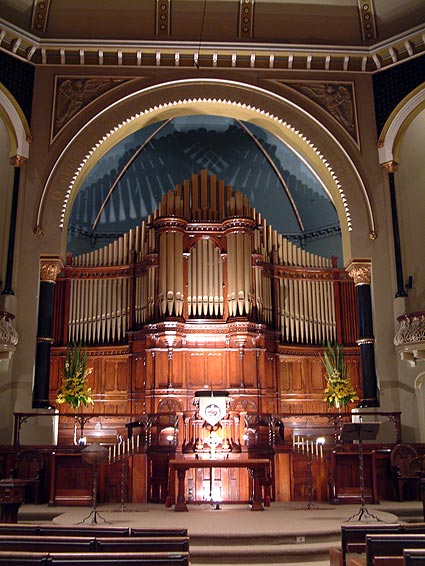
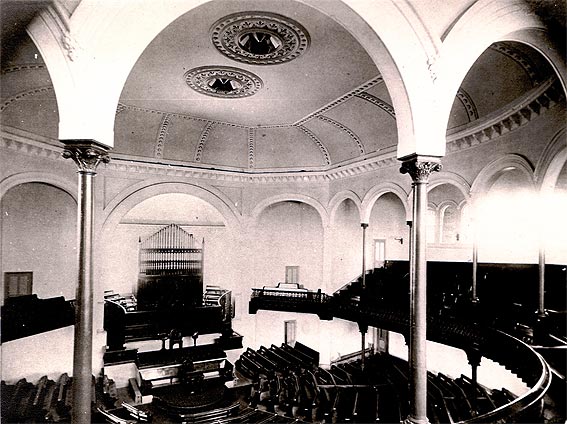
Original 1866 Hill organ
The first St Michael’s organ, seen above, was built in 1866 by the famous London firm of Hill & Son (job no 1204). This modest two manual, mechanical action organ contained 18 speaking stops. The pipework and some of the wind chests from this organ have been the basis for the subsequent instruments.
By the 1920’s the original Hill organ was proving to be inadequate for the needs of the congregation and in need of some repair. The Melbourne company of George Fincham & Sons built a new instrument using some of the parts from the old organ in 1923.
This organ used the then popular tubular-pneumatic action system which enabled the organist to be seated at some distance from the organ pipes, and to have a lighter key touch.
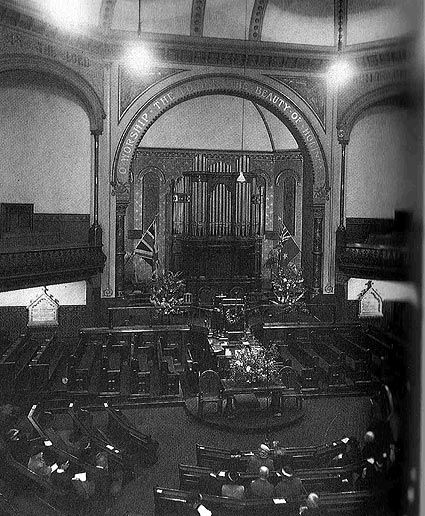

1925
Shown above is the 1923 organ. The organ’s console can be seen beneath the pulpit. The 1923 Organ was rebuilt in 1951 and fitted with electro pneumatic action. This organ was opened by the prominent English organist and composer Eric Thiman. This organ proved to be of inadequate size to fulfil the needs of the church.
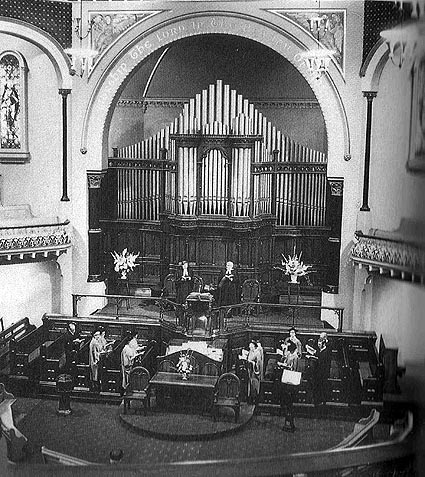
1958
The organ you see today was built in 1958 by George Fincham and Sons who also built the 1923 organ. The current organ is the work of George Bowring Fincham, grandson of the original George Fincham who started the company in 1864. The console was moved from its central location to its current position in 1978 and in 1979, the swell mixture stop was recast. The present organ has 3 manuals and pedals, 44 speaking stops and approximately 2225 speaking pipes. The keys and stop action are electro-pneumatic.
The Specification is as follows:
| GREAT DIVISION Double Open Diapason Open Diapason No 1 Open Diapason No 2 Stopped Diapason Octave Principal Wald Flute Twelfth Super Octave Fifteenth Mixture Trumpet Clarion Swell to Great Sub Octave Swell to Great Swell to Great Super Octave Choir to Great Sub Octave Choir to Great Choir to Great Super Octave SWELL DIVISION (Enclosed) Bourdon Open Diapason Hohl Flute Viol D’ Orchestra Voix Celeste Principal Flauto Traverso Fifteenth Mixture Cornopean Oboe Clarion Swell Sub Octave Swell Unison Off Swell Octave Tremulant CHOIR ORGAN (Enclosed) Rohr Gedact Dulciana Lieblich Flute Nazard Harmonic Piccolo Clarinet Orchestral Oboe Trumpet Clarion Choir Sub Octave Choir Unison Off Choir Octave Swell to Choir Tremulant PEDAL DIVISION Sub Bourdon Open Diapason Wood Open Diapason Metal Sub Bass Echo Bourdon Octave Cello Bass Flute Quartane Trombone Great to Pedal Swell to Pedal Choir to Pedal |
16 8 8 8 4 4 4 2-2/3 2 2 III 8 4 16 8 8 8 8 4 4 2 III 8 8 4 8 8 4 2-2/3 2 8 8 8 4 32 16 16 16 16 8 8 8 II 16 |
3-½" wind pressure 6" wind pressure 6" wind pressure 6" wind pressure 6" wind pressure 6" wind pressure 5" wind pressure 4" wind pressure 6" wind pressure 6" wind pressure 3-½" wind pressure 6" wind pressure |

© PdL 2006
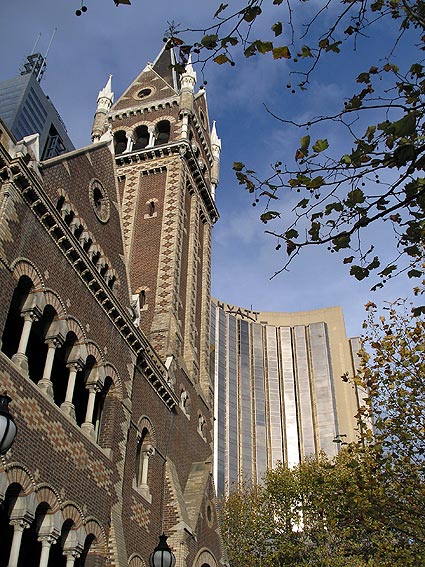
Simon Colvin (May 2007)
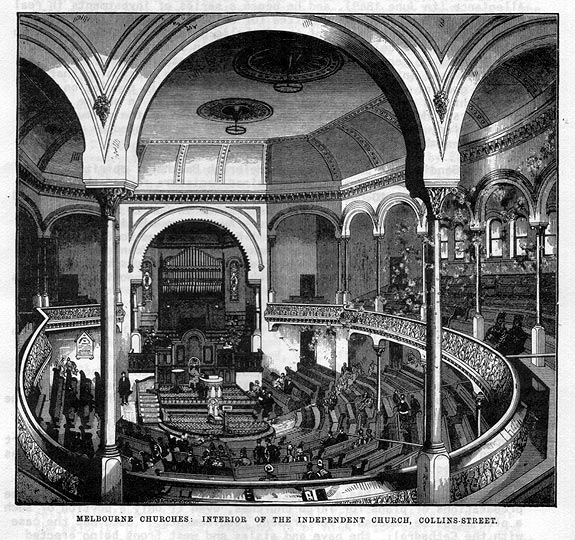
from the Australasian Sketcher
Historic photos supplied by Rhys Boak (organist 2007)
Information on the organ provided by Rhys Boak from a pamphlet the church has produced on the organ (Oct. 2008)